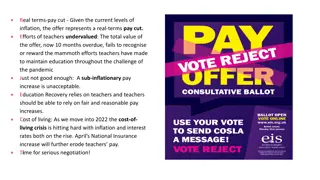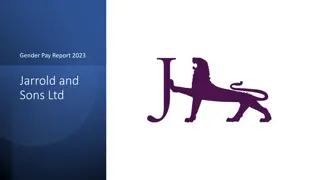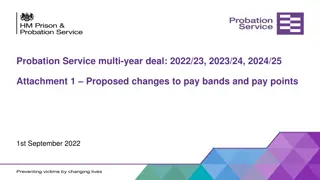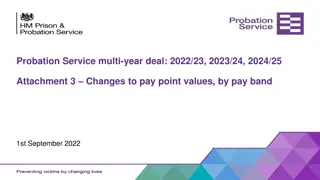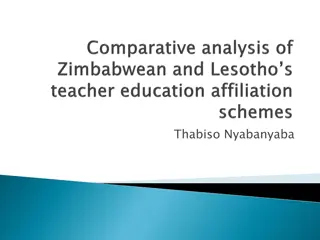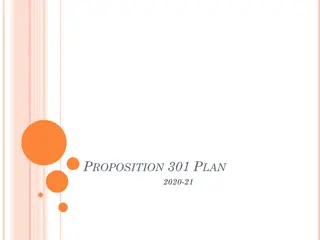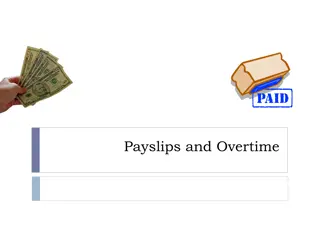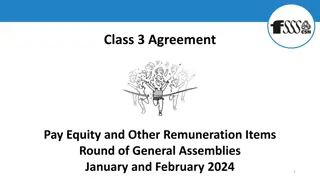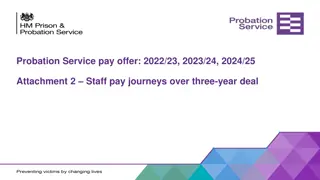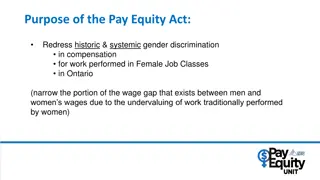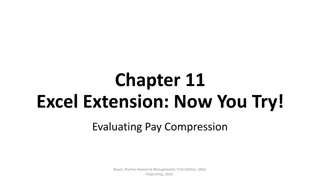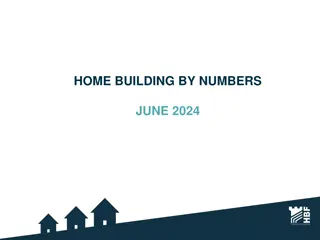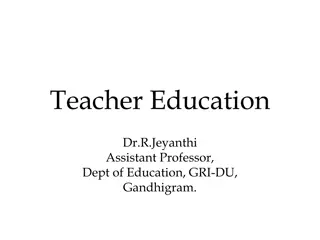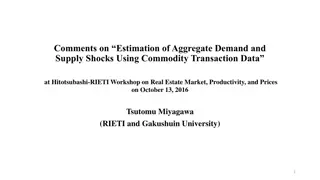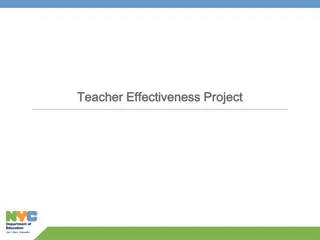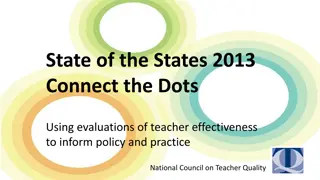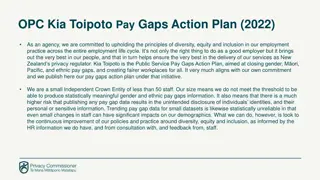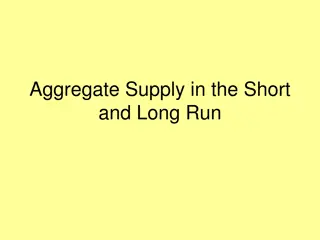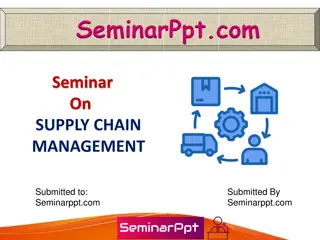Teacher Supply and Pay in England: Examining the Impact on Education System
Teachers play a crucial role in shaping young people's lives, impacting educational attainment, labor market outcomes, and non-cognitive skills. This study explores questions regarding teacher pay, retention, its impact on supply, and pupil performance. Research suggests that relative to their contribution, teachers may be underpaid compared to other occupations. Through various analyses, it's found that while there is a slight underpayment perception, adjusting for non-random selection shows teachers are not significantly underpaid.
Download Presentation

Please find below an Image/Link to download the presentation.
The content on the website is provided AS IS for your information and personal use only. It may not be sold, licensed, or shared on other websites without obtaining consent from the author. Download presentation by click this link. If you encounter any issues during the download, it is possible that the publisher has removed the file from their server.
E N D
Presentation Transcript
Is it all about the dollar? Teacher Supply in England, evidence from the LFS, SWC and the DLHE Joshua J. Fullard jjfull@essex.ac.uk
Teachers Are Important Outside of the family unit teachers are the most influential adults in young peoples lives. There is strong evidence that teachers have a causal effect on: Educational attainment Labour market outcomes Non-cognitive skills (i.e. effort, self- control, confidence, emotional stability)
Four Questions: Are teachers underpaid? Do teachers who quit sort into higher paying occupations? Do wages affect Teacher Supply? Do wages affect pupil performance?
Are Teacher Underpaid? Relative to their social/economic contribution Teacher pay is typically linked with experience not ability For a given level of experience bad teachers tend to be paid too much and good teachers tend to be paid too little. Chetty et al. (2011), Hanushek et. al.(2015)
Are Teacher Underpaid? Compared to what they would have earnt had they not gone into teaching? Do this by comparing current teachers earnings to the earnings of some non- teacher group such as: Non-manual occupations Graduates
Are Teacher Underpaid? o Teachers tend to earn less than the average graduate (~13% less) o Might explain why policy makers struggle to recruit graduates from the top end of the ability distribution o Does not mean current teachers could earn more in a different occupation as teachers differ from graduates on observable and unobservable characteristics
Are Teacher Underpaid? To get around non-random selection into teaching we use propensity score matching. Compare teachers to non-teaching graduates who look most like them based on observable characteristics
Are Teacher Underpaid? o Accounting for non- random selection teachers don t appear to be significantly underpaid (~3% less) o Relative Wages were lowest in the 90 s and since the public sector pay freeze (2010). o Data from 2019 suggests that teachers relative wages may have picked up
Are Teacher Underpaid? o Male Teachers tend to be paid ~15% less than the average male graduate o Accounting for non- random selection they still tend to earn ~10% less
Are Teacher Underpaid? o Female Teachers tend to earn a similar amount to the average graduate o Accounting for non- random selection they earn ~3% more o This might explain why men are far less likely to enter the and more likely to leave the profession
Are Teacher Underpaid? o Teachers initial wages are highly competitive o But grow at a slower rate over the age distribution o If young teachers quit due to pecuniary factors it s the growth of earnings, not current earnings, that drive this decision
Are Teacher Underpaid? o Teachers initial wages are highly competitive o But grow at a slower rate over the age distribution o If young teachers quit due to pecuniary factors it s the growth of earnings, not current earnings, that drive this decision
Are Teacher Underpaid? Our matching strategy matches on observable characteristics But graduates who sort into teaching clearly differ on unobservable characteristics to non-teaching graduates Matching current teachers to former teachers reduces the bias driven by unobservable differences
Teachers who quit sort into higher paying occupations? o Teachers who quit tend to sort into similarly paying occupations (~2.5% less) o Using former teachers to estimate current teachers outside option suggests that current teachers earn ~10% more than they would in their outside option
Are Teacher Underpaid? Teachers earn less than the average graduate When you account for non-random selection no strong evidence teachers could earn more in their outside option Teachers initial wages are highly competitive But grow at a slower rate than the average graduate Male teachers face a significant wage penalty teaching. Female teachers do not.
Wages and Teacher Supply Teacher Supply: Retention of current teachers Return of qualified teachers who are no longer teaching Recruitment of graduates into Initial Teacher Training Programmes
Wages and Teacher Supply Using the LFS and the Destination of Leavers from Higher Education (2003- 2012) we exploit the regional variation in teachers relative wages to estimate the effect of wages on the supply of graduates into teacher training programs.
Wages and Teacher Supply o A1sd increase in relative wages increases graduate enrolment onto Teacher Training Programmes by 0.05sd o This is stronger than the effect of teacher training bursaries (0.007sd) o But significantly smaller than the effect of job security (0.12sd)
Wages and Teacher Supply Do higher wages attract better teachers? No direct measure of teacher quality Effect is driven by non-Russell group graduates Relationship between teachers cognitive skills and pupil performance Hanushek et. al (2019) Class sizes don t have a statistically and/or economically significant effect on pupil performance Woessmann and West (2002) Higher wages are not necessarily welfare improving for pupils Effect is driven by female graduates and white graduates Negative effect on teacher diversity
Wages and pupil performance Estimate the effect of teachers relative wages on pupil performance on grade 4 math and science tests though an efficiency wage model Use 5 waves of the Trends in International Mathematics and Science Study (1995,2003, 2007, 2011 and 2015) and the LFS to estimate each TIMSS teachers relative wage
Wages and pupil performance o Consistent with our efficiency wage model we find that teachers relative wages are positively associated with Grade 4 pupil performance in England Data: TIMSS waves 1995,2003, 2007, 2011 and 2015 Grade 4 Science Scores Grade 4 Math Scores Wage Differences 0.392** 0.325+ (0.199) (0.205) Constant -0.554*** -0.880*** (0.0669) 24120 (0.0611) 24120 n + p < 0.15, *p < 0.10, **p < 0.05, ***p < 0.01 Controls include Teacher, School, Student characteristics and year fixed effects. Standard errors are clustered at the class level.
Four Questions: Are teachers underpaid? No Do teachers who quit sort into higher paying occupations? No Do wages affect Teacher Supply? Yes. But the effect size is modest Do wages affect pupil performance? Yes
Thank You Any Questions? Email: jjfull@essex.ac.uk Website: https://sites.google.com/view/joshuafullard












